1992 Chris Roberts Interview



Game Bytes was one of the very first electronic gaming magazines. It was created by Ross Erickson and distributed as an executable through FTP sites, bulletin boards and services like Compuserv. Looking back, it's a particularly raw time capsule of the game industry at the time, an era before professional public relations had quite taken over. And lucky for us, Mr. Erickson conducted a thorough interview with a very young Chris Roberts in 1992. This one is well worth the time for anyone interested in the history of making Wing Commander. It brings you right back to a more romantic era of game making and it's full of fascinating details about the early Wing Commanders... from the origin of the Kilrathi to the nuts and bolts of how the games were programmed to a wild (but still recognizable) plan for Wing Commander III!
An interview with Chris Roberts (6/16/92), Author of the Wing Commander series of PC games
Conducted by David Taylor
For those of you expecting a real interview- you lose. Chris Roberts talks faster than a Kilrathi having a catfit, and I asked the questions in the order that I received them from fans on the Internet so disjointed is a mild way of putting it..
First off, the guy is obscenely successful for his age- 24. His office isn't very large, but it's got what he needs in it- a sofa, miniatures which he collects, and his desk with a 486 on it. Oh, and some serious stereo speakers.
(The following question was enough to keep him going for a healthy 30 minutes. ;)
GB: Where are you from? How'd you learn to program? What was your first game?
CR: I'm from Manchester, England. My father taught sociology at the University of Manchester. I lived there until I was 19. I was always fascinated by the ability to move images on a screen and learned how to program a Pet computer when I was 13. I was writing games to land helicopters on pads at about the age of 13, I think.
Then I got a BBC Microcomputer with 32k RAM, a screen resolution of 320x200 at four colours or 160x200 at 16 colors. It was pretty cool back then! I started to program in BASIC on that. Then one of my old teachers became the editor of "BBC Microuser," a magazine that supported the users of BBC Microcomputers. Back in those days, all the magazines had a game you could type in in BASIC, so he phoned me up and asked me to write a game. I had been writing text adventures, stuff like that, so I wrote my first game for them called "Kong". You had to throw rocks at helicopters and could climb around on buildings, etc. That was my first program, and I sold it to BBC Microuser for about 100 pounds, so I said, "Oooo- this is cool!" (Will have to digitize that if GB goes multi-media in the future... it's a neat accent but starting to become Americanized). Well, about this time, I was getting dissatisfied with BASIC because I only had 12k of program space to work with, and BASIC was slow. So a friend gave me a game which didn't work, and I fiddled around with it, learned how it worked, and fixed it. I finished this one game, "Wizardor", a side-scrolling game. You're a junior wizard, and your father was killed by an evil dragon in the castle. You jump around platforms gathering spells, magical items, trying to collect three pieces of this sword to kill the dragon with. I sold that to Ocean in 1984. So they gave me money for that, and it was like- "Wow, this is lots of money!" It was like the #1 bestselling game for BBC Microcomputers for about 6 or 7 weeks. Over there, because it's a small country, popular games last about as long on the charts as pop music. After that, I wrote a soccer simulation called "Match Day", and after that "Striker's Run." "Striker's Run" was a side-scrolling game where you have to relay a message from HQ that's too important to transmit, and you were like jumping in helicopters, planes, and grabbing weapons. It was the first game to take advantage of the BBC Microcomputer "Master Series" (which had 128k of bank-switched RAM like the Apple). 12k kinda limited the graphics you could use, but with all this extra memory, I could add bases and landscape.
GB: "So was all this interfering with school at the time?"
CR: I had finished school (our equivalent of high school) after "Striker's Run" and was working on my A-levels to get in college. Over there, you go to college for exactly three years. Over here, you just go until you've taken enough hours. Anyway, I decided to take a year off before going to Manchester University to study Physics to program computer games 'cause I was having fun and making money doing it. Started getting depressed writing for the BBC Micro because only about 500,000 people were using it. Started work on a Commodore 64 game called "Ultra Realm" because there were more of these machines. It was the precursor to "Times of Lore". Wanted it to be like "Gauntlet" but wanted to be able to travel around, talk to people and all that. My father moved to Austin, Texas in 1985 to work at the University of Texas as a professor in sociology. I came across mainly to visit him. And it was like- "Wow, it's nice and sunny and doesn't rain all the time!" So I stayed with my father and started writing games here. So I went to this thing called "Hex World", sort of like a role-playing games convention, and I saw this computer picture of a gladiator on the wall. I said, "Who scanned this in? It looks really cool." The man said, "No one. It was drawn." He gave me Dennis Lubet's name. At the time, he was a freelance artist. I asked him to do the graphics for "Ultra Realm," and he was later hired by Origin Systems (also in Austin) because he'd been doing their box covers for a long time and Richard Garriott wanted to bring him in house. That's where the connection was for Origin. I came in, showed them "Ultra Realm," and I also showed it to Electronic Arts and Broderbund and there was a sort of a bidding war over it. It was a pretty neat game for the C64. I eventually chose Origin because they were in town, I thought everyone that works here was really neat, and they're the nicest most honest people I've met in the industry. About this time, "F19" came out- and it was very cool- but it only ran well on 386's which costed about $15k back then and almost no one had them, but it was the best game out, so no one complained. People don't ask, "What's the best CGA game- they ask what's the *best* game?" That sort of taught me a lesson. The way to do it was to look at a particular hardware base, preferably high-end, and write the best game for it, no holds barred. "Wing Commander" was written on that principal. It used as much VGA, music, and processor power as it could.
GB: "Was 'Wing Commander' the first game to use 3D bitmapped graphics?"
CR: I think "Battlehawks 1942" was the first game to use them back in 1988, I think. We used a similar technique. We were playing with "Sculpt 3D" on an Amiga ray-tracing these space ships, and said, "Woah- looks cool! Wish we could get this in the game!" So we pre-rendered everything.
GB: "How do you scale the bitmaps so fast?"
CR: The scaling was two months of 16-hour days of hell to code. Came up with an algorithm to do rotation approximately without the need for the full mathematical rotation. It came to about 600k of assembly source.
GB: (prepare to totally change gears) "What are your hobbies?"
CR: I like war game miniatures. I'm having a new house built, and I'm going to have a table just for my miniatures, and no one will ever have to clean them up or anything. I painted some of them very carefully, but I don't have time for that anymore, so I have them painted. I need a high level of aesthetics to pull me into a game. My tolerance level for games is very very low unless I can be pulled into it.
GB: "What do you spend your workday doing?"
CR: Well, during the daylight hours, I'm managing. In the evening, I'm coding. I usually show up at about 10:30 or 11 and go home at about 3 or 4 in the morning. It's like working two jobs. When the game's finished, I take it easy. Right now for "Strike Commander", there's 6 other programmers, 3 artists, one technical design assistant (TDA), and one musician. We all talk alot. Spend a lot of time being involved with the creation of new technology and learning everyone's code. My advantage is that I've done everything before, graphics, programming, art, and sound. It's nice to understand how every part slots together. I see way to many people becoming specialists in their own area. That needs to change.
GB: "What programming languages to you use?"
CR: C++ and assembly. "Wing Commander" used C. "Strike Commander" uses C++. Only programming course I'd taken was BASIC way back whenI was 13. So I had to learn C++. Never read any textbooks.
GB: "What do your peers think of your code?"
CR: I think it's alright. I've gotten a lot better since I started learning about, I'd say, a year and a half ago. Nobody in our group documents very well because we're trying to get the code done. We use long variable names and good spacing. Like for example, one variable name is AccelerationG2Gravity. So the code reads like English. I like C++. It's a much more structured language.
GB: "What kind of source code control do you use?"
CR: We use PVCS on a Novell network. We'd be dead without the network right now. We use Borland C++.
GB: "What's the most frustrating part of your job?"
CR: Working in a large group. Smaler groups taking longer would be nice. Nice environment, though. It's nice to be closer to the code, music, and every pixel in the game. LI laid the foundation for "Wing Commander" for 12 months before anyone else got their hands on it. I knew everything that had to be done at that point so it was a lot easier to manage. In "Strike Commander", we had to scrap at least 50-60% of the graphics code because it was done on assumptions that aren't true today.
GB: "What's the most rewarding part of your job?"
CR: By far the coolest part is when you put stuff together and it works and someone comes in and says, "Wow!" I like doing demos, especially if I'm doing something which blows everyone away. Nothing like busting your ass for months and months, you turn up on the show floor after working for 48 hours straight, turn on the computer, and everyone is crowded around looking at something which looks great.
GB: "How did you get the idea for 'Wing Commander'? One person asked if you got the idea from Man Kzin."
CR: No, didn't get it from that, although I can see where he got that idea. I had fun reading about star fighter combat. Instead of big ships, though, I liked the smaller dogfights. I'm a big fan of "Battlestar Gallactica" and "Star Wars". I wanted it to become the equivalent of an F16 fighter but in space- wanted a very military feel to it. And I wanted a more cinematic package, like music which changed with the scene. "Wing Commander" was great because we used all these ideas I'd been kicking around in my head for the past five years. It was one big experiment- that worked. Wanted clearly good guys against bad guys, so I wanted an alien race, but not reptiles or insects. It seemed like everyone was using reptiles and insects. I wanted a warrior-type race similar to the Japanese in World War II, with an honorable bushido-like code. So I tried to link this idea with mammals on earth, mainly dogs and large cats. I liked the idea of big cats.
GB: "Where did you get all the names for the things in 'Wing Commander'?"
CR: Well, I couldn't think of good ones, so I used stupid ones until I could think of something better. Like I knew they were cats so they'd be killing a lot of rats, so Kilrathi. And you know the "Dorkir" class ship? I just used "Dork Here" and these dumb names- you start using them and they tend to stick.
GB: "How do you blit to the screen so fast with the differently shaped canopies?"
CR: We copy a list of line-segments to the transparent parts of the cockpit. We can't double buffer in true MCGA, but you can on SVGA. We're going to take a look at that later.
GB: "Does the PC architecture bug the hell out of you?"
CR: Yes. If we could work in 32bit full addressing in 386 protected mode, would not bitch at all about that. They were planning to put Ultima VIII in protected mode using a DOS extender, but the disk access was to slow. "Strike Commander" will do 32bit computation but not addressing. "Strike" won't be as frantic as "Wing Commander". If you've played "Aces of the Pacific" or "Chuck Yeager's", they're the best flight simulators - most fun to play. There's heavy dog-fighting. So in "Strike" we're going to have fewer missiles which allows neat situations like 2 F16's against 10 Mig 29's. If you're a good dogfighter, you should be able to shoot them down. And the cinematic wraparound will be much nicer. The storyline is interactive so you can control your own destiny.
GB: "Does Origin have an R&D department?"
CR: No. Me, Richard [Garriott], and the programming teams are about it. It'd be nice to have that luxury, but I find you tend to learn new technology by working with it.
GB: "Do you have any programming nightmares to share?"
CR: Well, when we're trying to reach a certain milestone, the whole crew gets infected with a bit of craziness. When people pull 48-hour stints. One time, we were all working a 48-hour stint on "Strike" and "Ultima VII" before Christmas, and there were 30 people working here at 4:30am on a Monday morning. So we took a picture of all of us holding a clock so you could see what time it was. My brother has a big ol' Cadillac, so about 10 of us would pile in and head for Magnolia Cafe sometimes. Also, some of the musicians made a rap song about life at Origin once.
GB: "To what extent is AI used?"
CR: "We're using more and more AI. It's all moving towards neural nets, but that won't be until much much later. One thing in "Strike" is we want to have it learn from you. AI will become more and more important later one. We can't take the technology of drawing the graphics much further. We need to work harder on different stories. The "Strike" engine will be used for "Wing Commander III" which will be the end of the Kilrathi War, by the way. And there will be more interaction outside of the dogfights. "Wing Commander II" was more like 'you're the stunt double which watches the actor play your role when you get back to the ship from dogfighting.' This time, you'll be in command of a squadron and can make tactical decisions. You can define your own character. For instance, if a rookie screws up, you can bitch him out, give him a pep talk, or tell him about when you screwed up as a rookie. There won't be any a., b., and c. selections, though. You'll be able to control the facial expressions of your character.
GB: "Do you get a lot of fan mail?"
CR: Yeah, but I don't have time to write back, but we're using a lot of things people have suggested this time.
GB: "How does one get into a career like yours?"
CR: Start on an IBM. Get Borland or Turbo C, something with an easy IDE (Interactive Development Environment). Get a book on C and write a simple game like Pacman or something. Get fancier later- add your own graphics primatives, get Dpaint and create your own graphics. Nothing impresses us more than submitting a game that you've written with your along with your resume. It's something you can't get at school. Definitely teach yourself C, C++. Maybe take some courses. I'd bet that most architects would make good programmers because you do all the small pieces and still keep the big picture in mind.
GB: "How do artists get in the game industry?"
CR: Lots of artists we hire have had no computer experience. But you might want to get familiar with it using something like "Animator Pro" for example. And send the computer art as well as the normal art you've done.
GB: "What are the worst bottlenecks for your games?"
CR: Definitely the video card because of the slow bus.I can only get 40 full frames per second ona 486/33 using an Orchid II Pro card on an EISA bus. Blitting is 40% of the game, drawing triangles is the next biggest part.
GB: "Will your game(s) be able to take advantage of a local video bus?"
CR: We don't use them in development, but yeah.
GB: "Are you abandoning the 286?"
CR: Yeah, our games will be for 386's or higher from now on. We need the speed.
GB: "Are you looking forward to the 586?"
CR: It'll be a faster 486. I just like it when Intel rolls back the prices on their 386's.
GB: "Will CD ROM's be used in future games?"
CR: The full speech and score for "Strike Commander" will be on CD shortly after the initial release.
GB: "Are you ever going to port your games to Macs?"
CR: No way. They cost a lot to port. No one around here will tell you they're a stupid architecture or anything. If there were 10 million Macs out there, we would be more than happy to write games for it. The Mac market is not very game oriented at all. And people do a lot of pirating on them, too. Every time we've sold a game on the Mac, we've lost money.
GB: "Will there by a way to network machines so that someone else can manually control the wingman?"
CR: We will do that in house for testing the AI, but that would need a lot of testing, and we won't put it in the released version. We may have an expansion disk later to do that. The system is very object oriented, so it's easy to do that.
GB: "How do you debug a game like this?"
CR: The only way is to break it into smaller modules. Our biggest problem is that Turbo Debugger 386 doesn't work with EMS. TD 286 uses DOS memory (which we desparately need). Turbo Debugger is a real life-saver so we'll be working on that.
GB: "What would you say are the most innovative games outside of Origin?"
CR: I'd say Dynamix is really good. "Aces of the Pacific" and "Red Baron" are really good simulators. I also have a lot of respect for Lucasfilm. Virtual reality will be fun. We're waiting for a VR headset.
GB: "What do you see in the next 10 years?"
CR: 3D games are coming around. Virtual reality. CD ROM's will be useful for somethings but their slowness makes them good for mainly just mass storage.
GB: "What does a 'Creative Director' do?"
CR: I maintain the story integrity for the "Wing Commander" series, the technology integrity. I do that for projects based on intellectual property of mine.
GB: "Have you considered having a female player?"
CR: I have wanted that, but the problem is that there's a lot of artwork associated with the main character. To have two characters doubles the amount of artwork for the game. When 92-96% of your players are male and you have to do twice as much work, that's just not a reasonable thing to support. It's a male character for economic reasons. Unfortunately...
With that, we ended this high-speed interview. I left, and he moved right onto the next order of business. For all the games they play, those people seem pretty busy. Sufferin' hairbals- I forgot to ask how much he pulls down a year. Oh well...
Big thanks to the many questions submitted by the following Internetters (arranged in the order that I received questions):
Mark LoSacco
Adam Pletcher
Ross Erickson
Rob Johnson
Kevin Lucas Lord
Amit Patel
Adrian Esdaile
Jason O'Rourke
David Yip
Richard Park
Ryan Bayne
Ted Ward
Jim Luchford
Matthew Wigdahl
These interviews wouldn't be half as fun without your questions, guys! Thanks!


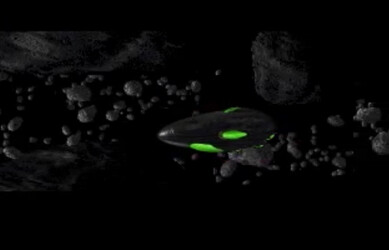

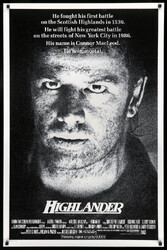
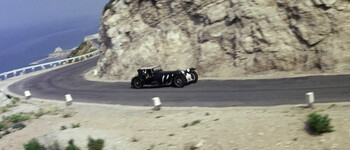

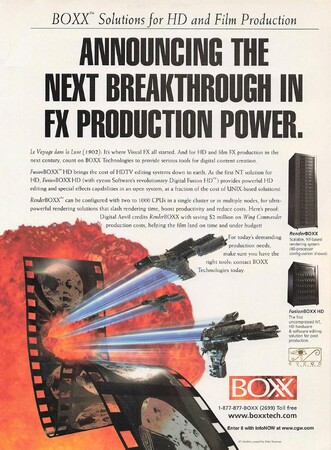
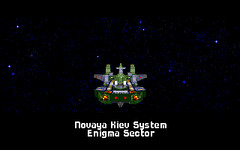

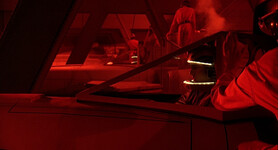
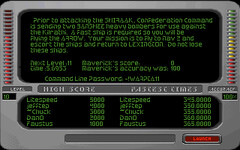
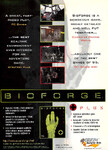

Follow or Contact Us